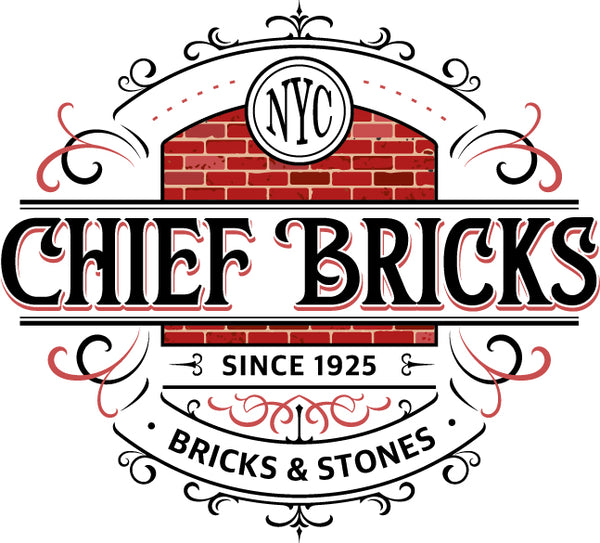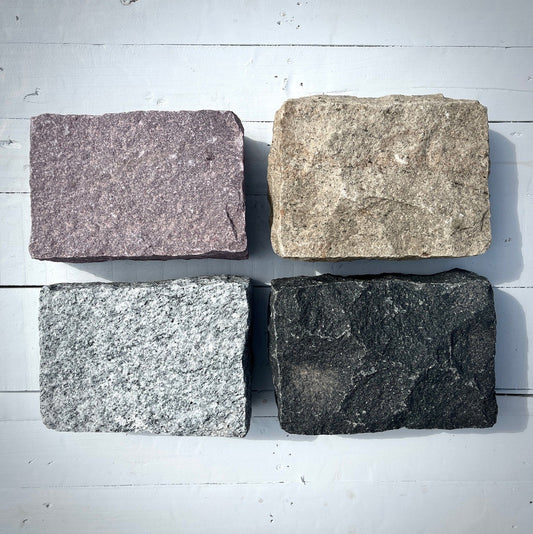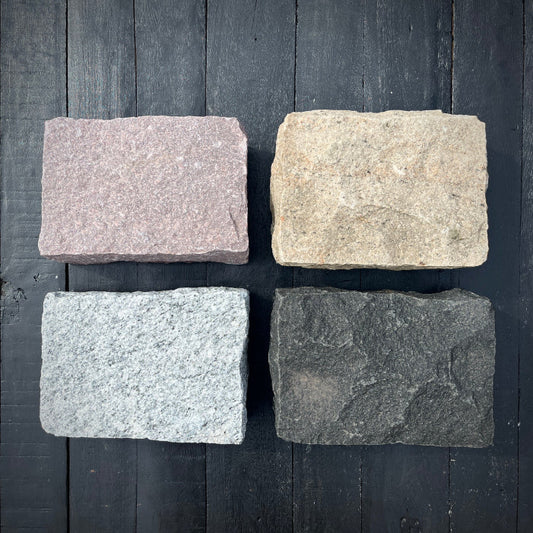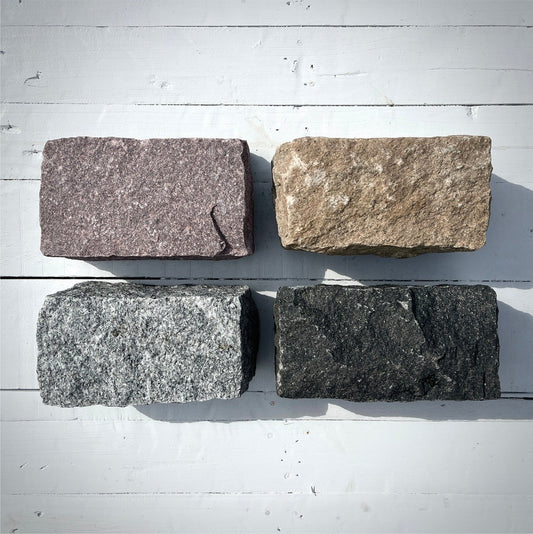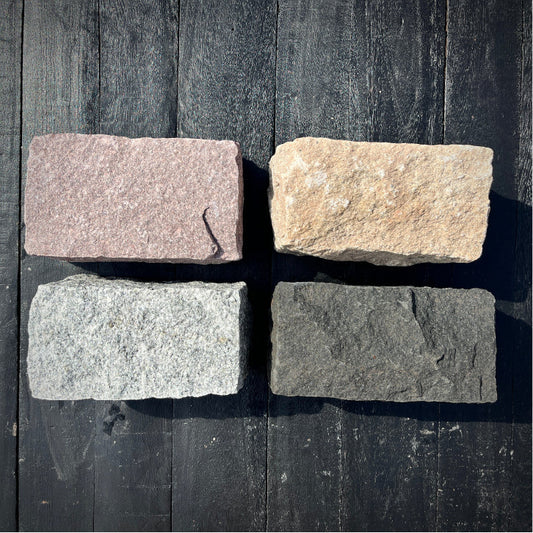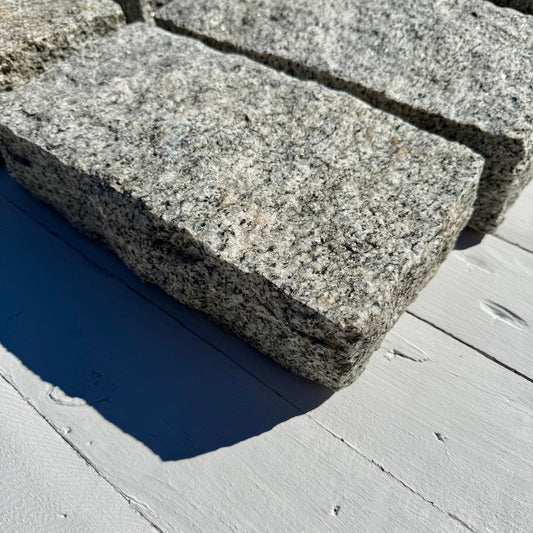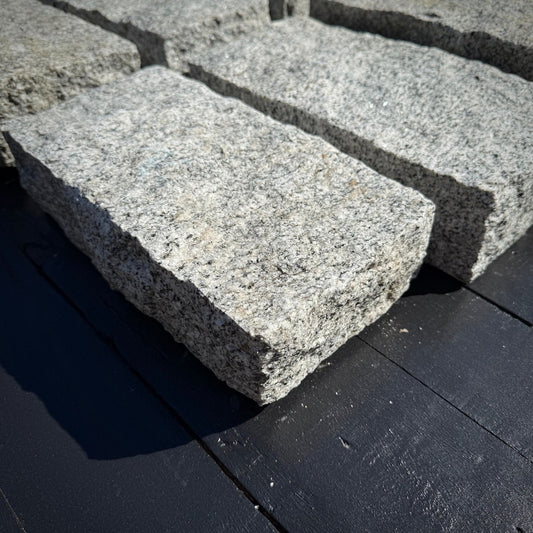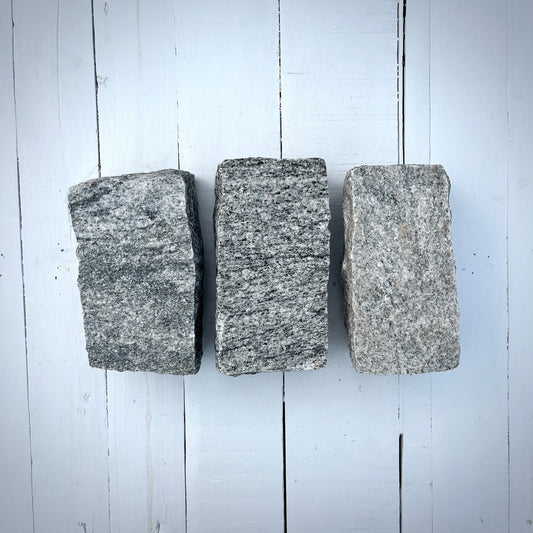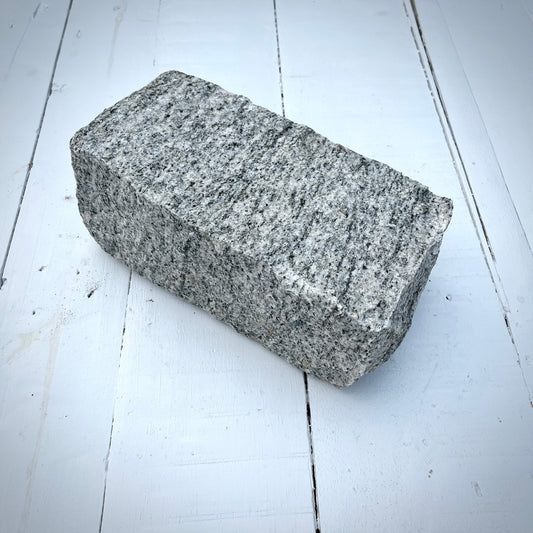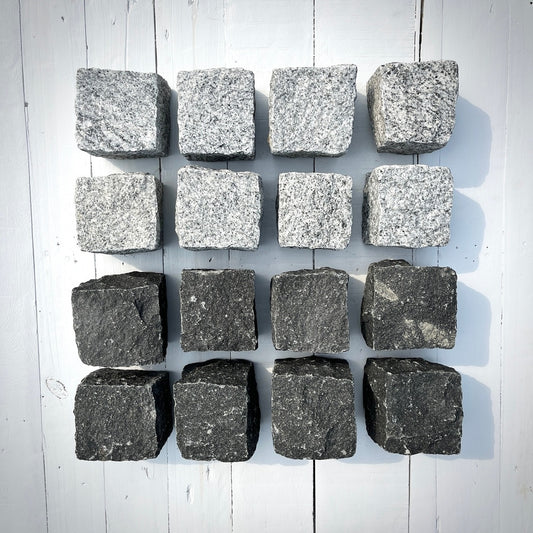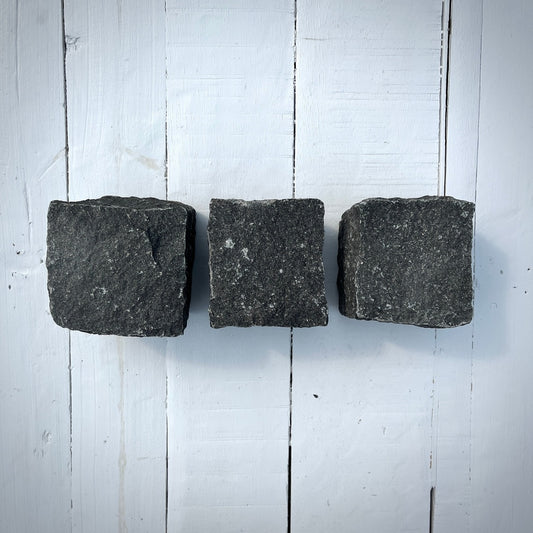Have you ever walked down an old street and felt a connection to the past? The uneven, sturdy stones under your feet tell a story. You're likely walking on something very similar to a Belgian Block, a material that offers timeless beauty that modern pavers struggle to match.
Bringing that old-world charm to your own home is easier than you think. This guide explains what makes genuine Belgian Block special and a fantastic choice for your property. We will also cover its origins and how you can use it to transform your landscape.
Table of Contents:
- What Exactly Is Belgian Block?
- A Walk Through History: Where Did It Come From?
- Why Choose Belgian Block for Your Project? The Pros and Cons
- Popular Uses for That Old-World Charm
- What to Look for in Quality Belgian Block
- The Installation Process: A Brief Overview
- Let's Talk Cost: Budgeting for Your Project
- Conclusion
What Exactly Is Belgian Block?
A Belgian Block is a quarried stone, typically cut into a rough rectangular or cube shape. Most are made from durable granite, but they are also found in other hard stones like basalt or porphyry. This material is renowned for its strength and rustic appearance.
People often use the term interchangeably with granite cobblestone, but they are different. Traditional cobblestones are naturally rounded stones gathered from riverbeds, resulting in a more irregular surface. Belgian blocks, on the other hand, are quarried and cut to a general size, giving them flatter surfaces for a more stable, though still charmingly rustic, finish.
These stones come in several common sizes. Jumbo blocks are the largest and are great for heavy-duty applications like driveways. Regular, regulation or standard blocks are versatile for walkways and edging, while smaller cubes are often used for decorative patterns and accents.
A Walk Through History: Where Did It Come From?
The name is slightly misleading, as not all of these blocks originated in Belgium. The name became popular because Belgium was one of the first and largest exporters of these stone pavers. European cities needed roads that could stand up to constant horse and cart traffic for centuries.
Many of these historic stones made their way to America in a very interesting way. In the 18th and 19th centuries, ships sailing from Europe needed weight, or ballast, to stay stable on the journey. They filled their hulls with these heavy granite belgian blocks, sometimes quarried in places from Belgium to other parts of Europe.
Upon arriving in American ports, the stones were unloaded to make room for cargo. Growing cities then used them to pave their streets, which is why many historic districts still feature these beautiful granite surfaces. This rich history is embedded in every single stone, connecting your home to a long tradition of durable craftsmanship.
Why Choose Belgian Block for Your Project? The Pros and Cons
Like any building material, these blocks come with their own set of advantages and disadvantages. Looking at both sides helps you make the right choice for your home. It's important to weigh these factors against your budget, aesthetic goals, and long-term plans.
The Upsides: Durability and Beauty
The number one reason people choose Belgian blocks is their incredible strength. We're talking about solid granite that can literally last for centuries. It stands up to heavy vehicle traffic, extreme weather, and the damaging freeze-thaw cycles that destroy other materials like concrete.
Then there's the unmatched aesthetic. A driveway or walkway made from these stones adds significant curb appeal and character. This kind of upgrade can even increase your property's value because of its premium look and longevity.
Once installed correctly, they are quite low-maintenance. They do not crack like concrete or need sealing like asphalt. Plus, if one stone somehow gets damaged or stained, you can simply replace that single block instead of redoing the entire surface.
Potential Downsides to Consider
The biggest hurdle for many homeowners is the initial cost. The material itself is more expensive than concrete pavers or poured concrete. The installation process is also very labor-intensive, which adds significantly to the overall price tag.
This is not a project for a casual DIY enthusiast. Proper installation is critical to its performance and requires an experienced professional who understands base preparation. The naturally uneven surface can also make snow removal with a shovel or plow a bit more challenging than on a flat surface.
Because the stones are typically set in sand, you might see some weed growth between the joints. This can be managed with periodic maintenance or by using a polymeric sand during installation. Polymeric sand hardens and helps block weed growth effectively.
Popular Uses for That Old-World Charm
So where can you use this versatile stone? Its strength and beauty lend themselves to several stunning applications around your property. You can use it for an entire project or as a beautiful accent to complement other materials.
- Driveways: This is the ultimate application for granite belgian block. A full block driveway is a statement piece that will last a lifetime and handle any vehicle you can park on it. The blocks can be laid in various patterns, like running bond or herringbone, for added visual interest.
- Walkways and Patios: For pedestrian areas, the blocks create an enchanting, rustic path through a garden. They are also perfect for a charming European-style patio for entertaining guests. Their texture provides a non-slip surface, which is a great benefit.
- Edging: A very popular and more affordable option is using them as an edging material. A single row of blocks provides a beautiful, durable border for a garden bed, walkway, or an asphalt driveway. This creates a clean, finished look and helps contain mulch or gravel.
- Driveway Aprons: The apron is the first few feet of the driveway at the street. Using blocks here creates a grand entrance and an elegant transition from the public road to your private property. It adds a touch of class without the cost of a full block driveway.
- Granite Steps: For properties with a slope, solid granite steps offer a perfect match to block walkways or patios. These large, durable slabs provide a safe and majestic way to transition between different levels of your landscape. They are extremely stable and will not degrade over time.
What to Look for in Quality Belgian Block
Not all blocks are created equal. The difference between a stunning, long-lasting installation and a messy, problematic one often comes down to the quality of the stone itself and the transportation handling from the quarry to your job site.
Look for Non-Tumbled Belgian Blocks and you'll find all that matters.
Uniformity
You want stones that are relatively uniform in size. While a bit of variation creates a natural look, wild inconsistencies make installation a nightmare and can increase labor costs. Consistent dimensions allow your installer to create tight, even joint lines for a professional and stable finish.
Stones that are all different shapes and sizes lead to wide, irregular gaps. This can look sloppy and may create tripping hazards. A more uniform supply makes the entire surface stronger and more visually appealing.
Color and Finish
Look for stones that show their true, rich color, often a classic grey shade. Many imported blocks are simply tumbled in bulk to give them a weathered look. This process can scratch the surfaces and dull the natural beauty of the granite.
High-quality stones should have a clean appearance, not a scuffed one. The color should come from the stone itself, not from surface-level damage. This ensures the beauty you pay for is what you see in your final project for years to come.
Cut Quality
The edges of the blocks are also very important. Quality blocks will have linear, or relatively straight, cut edges. This, again, helps with creating those tight joints and a clean, organized pattern.
When stones are tumbled in bulk, the edges often get chipped and damaged. This prevents a tight fit and results in a more jumbled, less refined appearance. A clean cut is a sign of a better quarrying and finishing process from the supplier.
Source Reliability
Do you know where your stone is coming from? Dealing with a supplier who gets their blocks directly from a dedicated quarry is a huge plus. It means there is no middleman and there is better control over the quality and consistency of the product.
While the historic stones came from Europe, today high-quality granite is quarried all over the world, including in places like Brazil, India and Canada. A direct source ensures a more consistent supply and protects you from quality issues. It often translates to getting a better product that has been handled with care from the quarry to your driveway.
The Installation Process: A Brief Overview
As mentioned, installing these blocks is a job for a seasoned pro. The beauty of the final product is completely dependent on the quality of the base underneath it. A poor foundation will lead to shifting, sinking, and eventual failure of the entire surface.
Here's a simplified look at how professionals get the job done right:
- Excavation: The crew will dig out the entire area to a specific depth, usually around 10-12 inches for a driveway that needs to support vehicles. This removes soft topsoil and makes room for a strong, stable base.
- Base Preparation: This is the most vital step. They will add and compact several inches of a crushed gravel base, followed by a layer of sand. The foundation must be properly graded to allow for drainage and prevent heaving during winter frosts.
- Laying the Blocks: Each stone is then laid by hand and set into the sand layer with a mallet. The installer carefully places them to create the desired pattern and maintain even lines and a consistent surface height.
- Edge Restraints: A sturdy edge restraint, often made of plastic, steel, or concrete, is installed around the perimeter. This is crucial for locking the blocks in place and preventing them from spreading or shifting over time under load.
- Filling the Joints: Once all the blocks are in place, fine sand or polymeric sand is swept into the gaps between them. A plate compactor is then run over the surface to settle the blocks and lock them together into a strong, flexible pavement.
Let's Talk Cost: Budgeting for Your Project
You're probably wondering what an investment like this looks like. The total cost is broken down into two main parts: the cost of the blocks themselves and the cost of the professional labor to install them. The unit price/per block can vary based on size and quality.
The stones can vary quite a bit in price based on the type of granite, size, and where you buy them from. Generally, you can expect the material to be more expensive than typical concrete pavers or other options like chief bricks. Labor is the other big part of the equation because the work is slow and requires skill.
Below is a very rough estimate for a sample project. Keep an eye out for a sale price from suppliers, but the regular price for labor is less likely to fluctuate. Remember that prices can change a lot based on your location and the complexity of your job.
| Item | Estimated Cost Per Square Foot | Sample 400 sq ft Driveway |
| Belgian Block Material | $10 - $25 | $4,000 - $10,000 |
| Professional Labor | $15 - $40 | $6,000 - $16,000 |
| Total Estimated Cost | $25 - $65 | $10,000 - $26,000 |
While the upfront cost is high, remember that this is a long-term investment. You will likely never have to replace a properly installed Belgian Block surface. It will outlast asphalt and concrete many times over, saving you money on future repairs and replacements.
Conclusion
Choosing to use Belgian Block is about more than just paving a surface. It's about adding lasting character, history, and undeniable beauty to your home. Its incredible durability means you are making a choice that will stand the test of time, giving you a feature you can enjoy for decades.
A successful project comes down to two things. First, select a high-quality Belgian Block with uniform size and clean-cut edges from a reliable source. Second, hire an experienced professional who understands the importance of building a solid foundation from the ground up.
With those two elements in place, you'll have a stunning addition that adds significant value and timeless appeal to your property. It's an investment in both the function and the soul of your home. You will be installing a piece of history that continues to tell its story.
